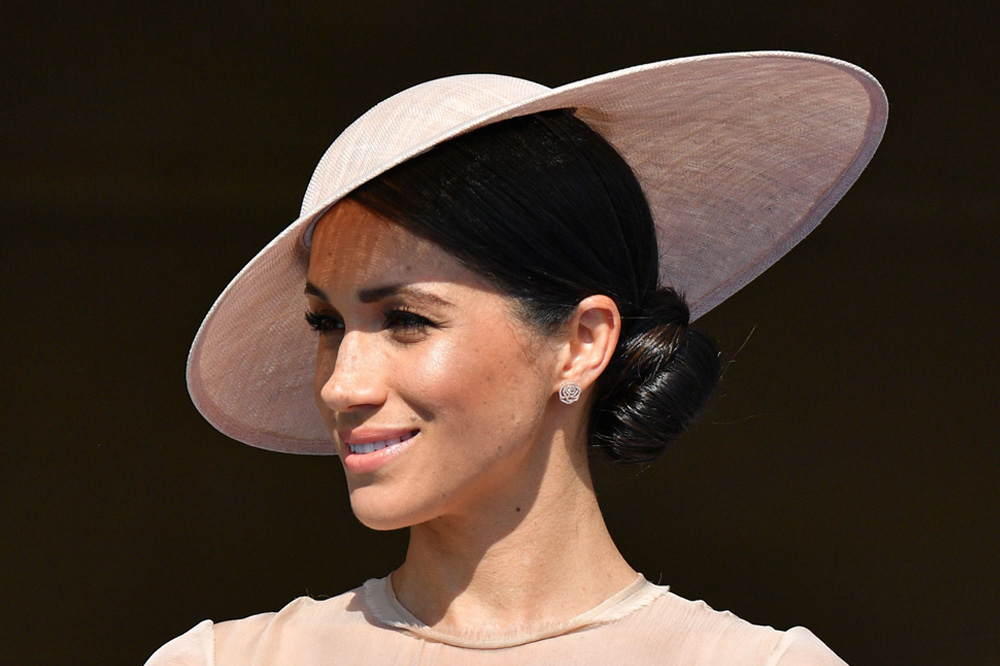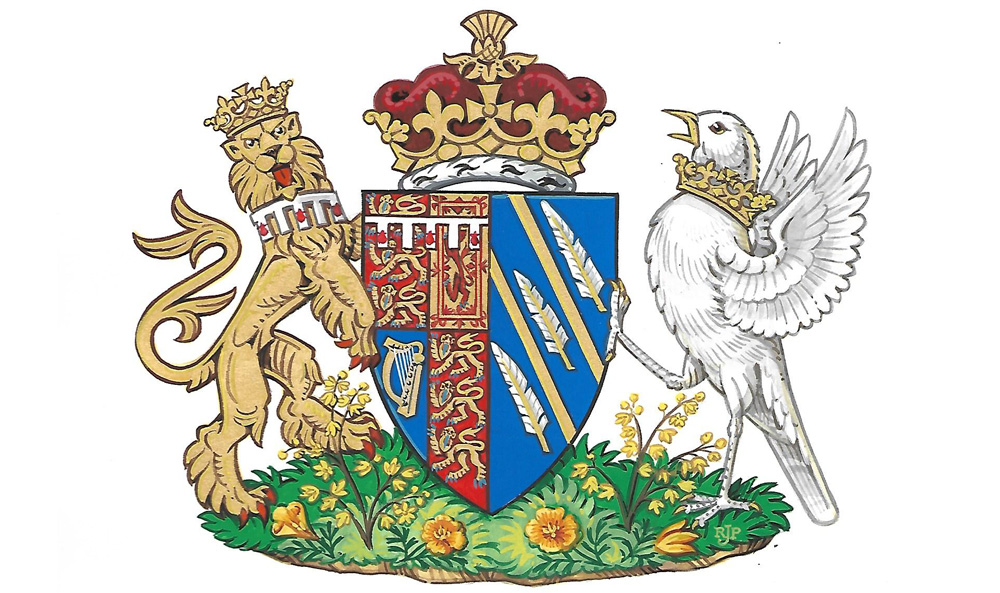
Meghan Markle, The Duchess of Sussex
The newest member of the royal family worked closely with the College of Arms throughout the design process to ensure that its design and symbolism is in line with Meghan’s personal values.
The design of the arms had to be approved by Her Majesty, Queen Elizabeth the 2nd and Mr. Thomas Woodcock, Garter King of Arms and Senior Herald in England.
Looking at its design and what it represents, Kensington Palace’s spokesperson has revealed that the blue background of the shield signifies the Pacific Ocean, off the California coast, while the two golden rays across the shield are symbolic of the sunshine of her home-state.
There are 3 quills which symbolize communication and the power of words, which is just as the Duchess is an active advocate of women’s rights and spoke at the UN Women’s 2015 conference about gender equality and beneath the shield, there is grass and golden poppies which are California’s state flower and Wintersweet, which is grown at Kensington Palace, where both Harry and Markle share a home at Nottingham Cottage on the palace grounds.

Kensington Palace also revealed that "it is customary for Supporters of the shield to be assigned to Members of the Royal Family, and for wives of members of the royal family to have one of their husband’s Supporters and one relating to themselves. The Supporter relating to The Duchess of Sussex is a songbird with wings elevated as if flying and an open beak, which with the quill represents the power of communication."
Also assigned to Meghan Markle as the Duchess of Sussex is a Coronet that was laid down by Royal Warrant in 1917 for the children of the Heir Apparent and is made up of two crosses patée, four fleurs-de-lys and two strawberry leaves.
For aristocracy, the coat of arms for a married woman are shown with those of her husband and they are both represented on the same shield.
Mr. Thomas Woodcock, Garter King of Arms expressed that Meghan was rather hands on with the design process, "The Duchess of Sussex took a great interest in the design. Good heraldic design is nearly always simple and the Arms of The Duchess of Sussex stand well beside the historic beauty of the quartered British Royal Arms. Heraldry as a means of identification has flourished in Europe for almost 900 years."

















